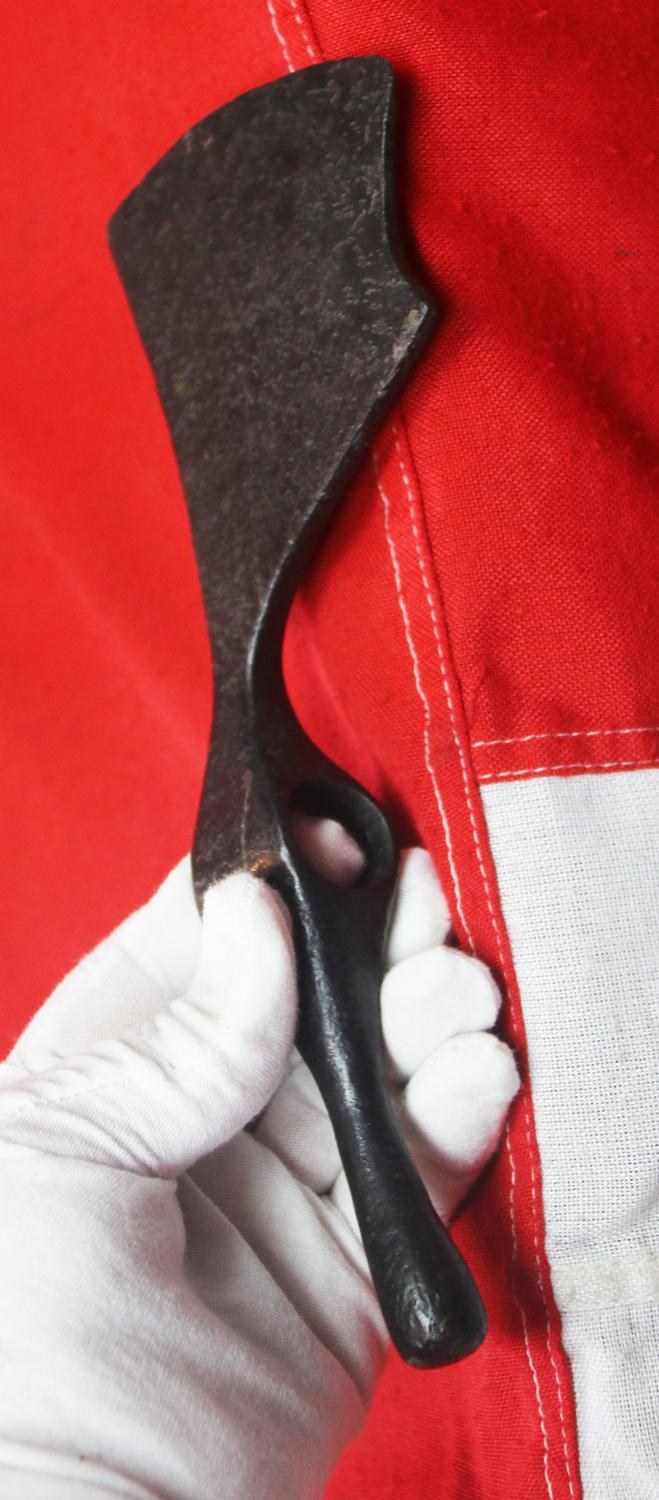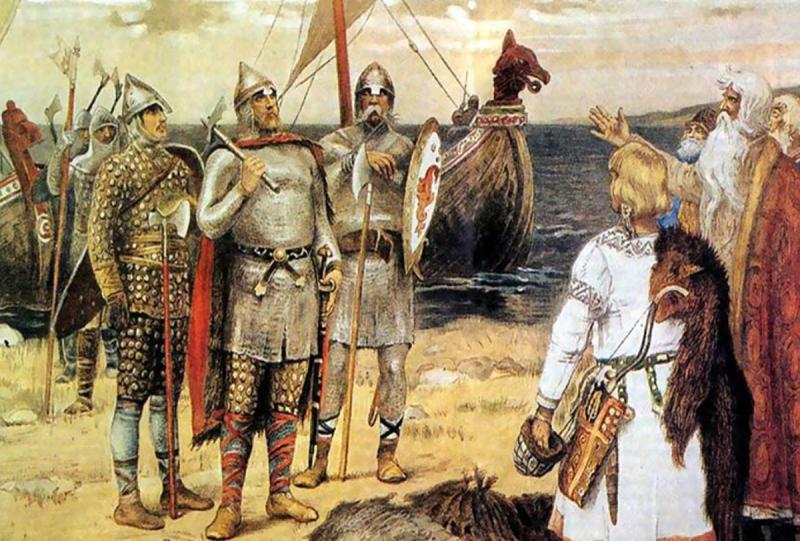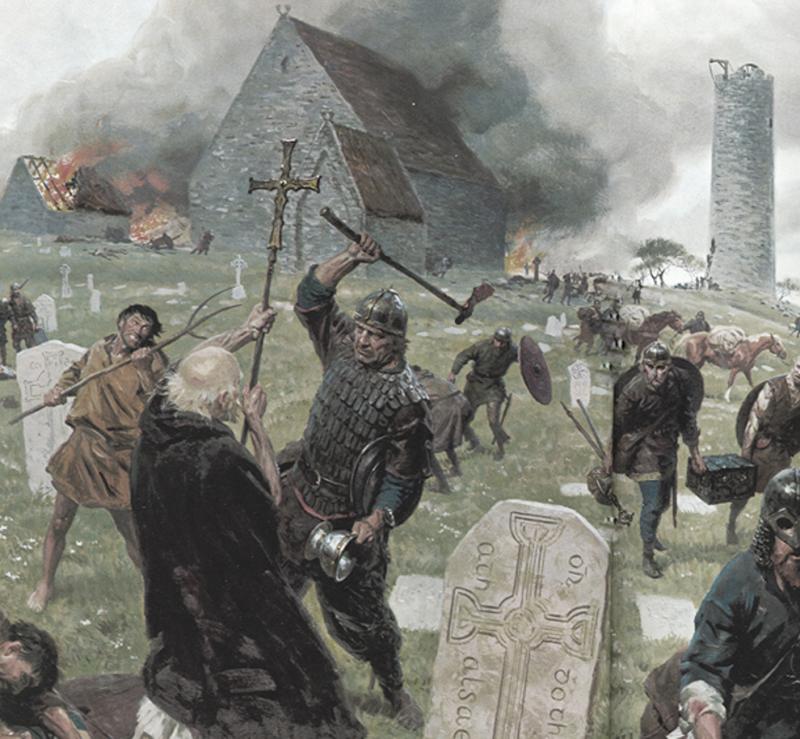A Beautiful Ancient Viking War Hammer. An Iron Hammer-Axe From 900 to 1000 Years Old in Fabulously Preserved Condition
An iron war hammer-axehead with wide bearded blade, round socket and a rounded hammer section with expanded end extension to the rear.
In 793, terror descended on the coast of Northumbria as armed raiders attacked the defenceless monastery of St Cuthbert on Lindisfarne. The terrified monks watched helplessly as the invaders made off with a haul of treasure and a clutch of captives. It was the first recorded raid by the Vikings, seaborne pirates from Scandinavia who would prey on coastal communities in north-western Europe for more than two centuries and create for themselves a reputation as fierce and pitiless warriors. The Anglo-Saxon cleric Alcuin of York wrote dramatically of the Lindisfarne raid that the church was spattered with the blood of the priests of God, despoiled of all its ornaments given as a prey to pagan peoples and subsequent (mainly Christian) writers and chroniclers lost few opportunities to demonise the (mainly pagan) Vikings. Yet, though they undeniably carried out very destructive and violent attacks, from small-scale raids against churches to major campaigns involving thousands of warriors, the Vikings formed part of a complex and often sophisticated Scandinavian culture. As well as raiders they were traders, reaching as far east as the rivers of Russia and the Caspian Sea; explorers, sending ships far across the Atlantic to land on the coastline of North America five centuries before Columbus; poets, composing verse and prose sagas of great power, and artists, creating works of astonishing beauty.Their victims did not refer to them as Vikings. That name came later, becoming popularised by the 11th century and possibly deriving from the word vik, which in the Old Norse language the Vikings spoke means bay or inlet. Instead they were called Dani (Danes) there was no sense at the time that this should refer only to the inhabitants of what we now call Denmark pagani (pagans) or simply Normanni Northmen In medieval Scandinavian languages, a Vikingr is a pirate, a freebooter who seeks wealth either by ship-borne raids on foreign coasts or by waylaying more peaceful seafarers in home waters. There is also an abstract noun Viking, meaning ‘the act of going raiding overseas
In the world of collecting early weaponry an axe is defined as it’s head, it’s haft was separate often made of vulnerable woods that can not survive the ravages of time.
One of the most famous Viking axes is Helm (named after the Norse death goddess), which belonged to King Magnus of Norway and Denmark. He is said to have inherited the weapon from his father, Olav Haraldsson of Norway, whose ax features prominently in Norway’s national coat of arms. Some Viking axes if they were wielded by a particularly strong and skilled warrior could even cut through chainmail and helmets. When King Magnus’s poet credited the king with being able to split heads like firewood, he wasn’t necessarily being hyperbolic. Writing about the pre-Viking Franks and their use of throwing axes, the Francisca, Procopius makes it clear that the Franks threw their axes immediately before hand to hand combat with the purpose of breaking shields and disrupting the enemy line while possibly wounding or killing an enemy warrior. The weight of the head and length of the haft would allow the axe to be thrown with considerable momentum to an effective range of about 12 m (40 ft). Even if the edge of the blade were not to strike the target, the weight of the iron head could cause injury. The francisca also had a psychological effect, in that, on the throwing of the francisca, the enemy might turn and run in the fear that another volley was coming. It is most logical that the Vikings may well have adopted this system of axe throwing combat from the earlier Franks, as it seemed most effective in numerous combat arenas.
For reference of type see; Cf. Sedov, B.B. Finno-Ugri i Balti v Epokhi Srednevekovija, 1987, table CXXIV 7".
Code: 25459
1295.00 GBP







